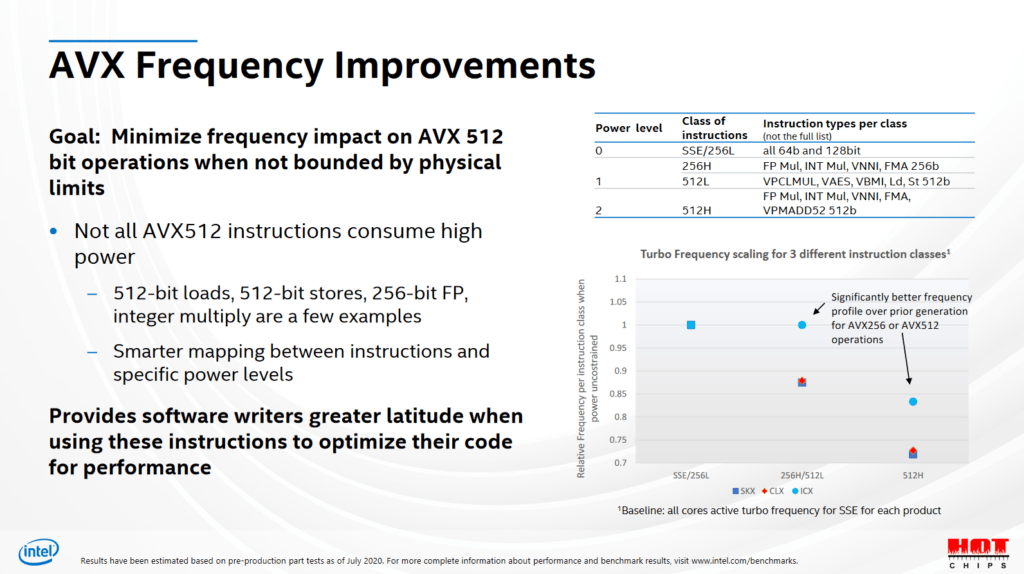Intel AVX Ratio Offset clips the maximum Turbo Boost ratio when AVX instructions are used, enabling maximum performance for SSE & AVX workloads.
Intel first introduced the AVX ratio offset on Broadwell-E processors. Successive processors adopted this feature and eventually expanded it with AVX2 and AVX-512 ratio offsets.

AVX ratio offsets are very useful to achieve maximum performance for both SSE and AVX workloads. Generally speaking, an offset of 2 or 3 is recommended but it is highly dependent on not only your cooling solution but also the motherboard you’re using. That is because AVX workloads are very demanding and therefore require great cooling and power delivery.
From Broadwell-E to Icelake/Alder Lake, the AVX ratio offset was offset from the all-core Turbo Ratio. Since Icelake-SP and Alder Lake, Intel has adjusted how the AVX ratio offset works. A key goal was to improve the frequency in AVX workloads.

On Alder Lake:
- The AVX2 ratio offset is only applied to the P-cores. The E-core frequency is unaffected.
- By default, the maximum ratio during an AVX workload is the Turbo Boost 2.0 ratio. If you want an offset of 0, so AVX workload doesn’t reduce the frequency, you’ll need to manually set 0. Note that on some BIOSes programming 0 means programming “default”, in which case you’ll be limited to a maximum 51X for the AVX ratio on the 12900K.
- The AVX ratio offset is referenced against each core as Alder Lake supports independent ratios for each P-core. Before Rocket Lake, the AVX offset would be referenced against the all-core maximum ratio. As the AVX offset will be applied to each core separately, you’ll have to be a little careful when your overclock has different ratios for different cores.
- Intel has made some changes to how it flags an AVX workload. The effect is that some light AVX workloads will no longer trigger the AVX ratio offset. We can demonstrate this new behavior using Y-cruncher.
Using Y-cruncher component stress tester, we run a variety of AVX workloads on the 12900K. We configure the 12900K as follows: 5GHz for the P-cores, 3.9GHz for the E-cores, and an AVX offset of 5 ratios. Then we use HWiNFO to monitor the effective clock during the benchmark
During the Y-cruncher workloads, we see that during BKT the P-core effective clock frequency is 5GHz. Since this is a non-AVX workload, it’s as expected. Then there are two AVX workloads, BPP and SFT, where the P-core effective clock drops to 4.5 GHz. This is expected as the 5 GHz P-core frequency is reduced by 500 MHz due to the AVX offset.
During the FFT workload, also AVX, the frequency is back to 5 GHz. So, the AVX offset was not triggered. Then the next 4 AVX workloads, N64, HNT, VST, and C17, bounce back and forth the AVX offset and non-offset.
